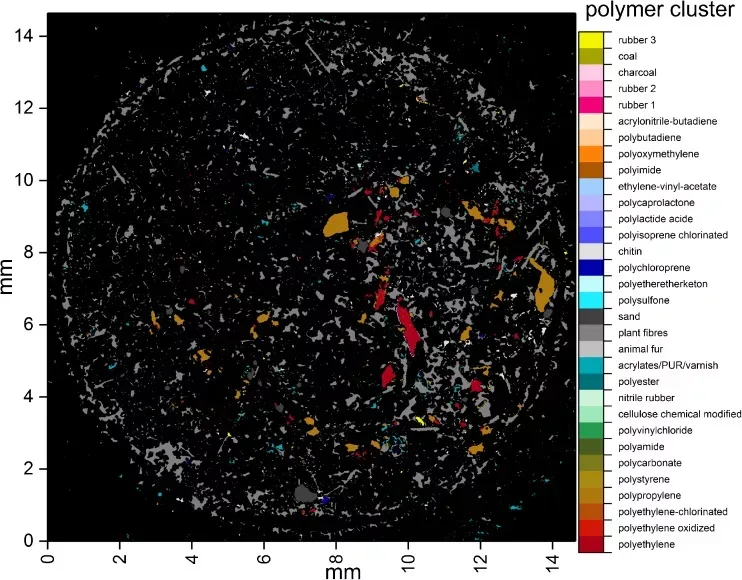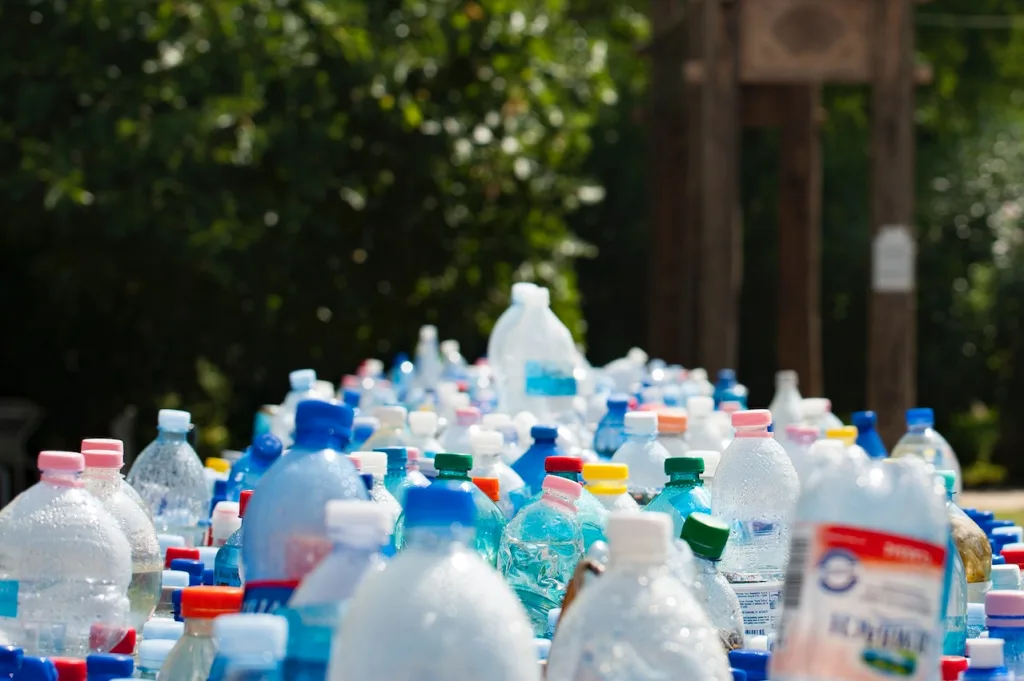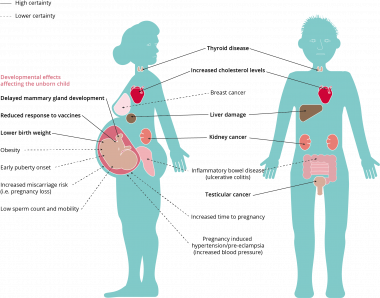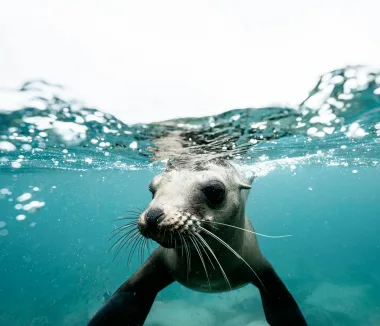Last Updated on May 14, 2024 by Ecologica Life
The first fully synthetic plastic was created in 1907. We now rely on plastics in every aspect of our lives. If the current production and waste management trends continue, around 12,000 million metric tonnes of plastic waste may enter the natural environment by 2050.
Our increase in plastic production has led to microplastics (MPs) being found everywhere in the environment. We have recently discovered MPs in human blood samples. It is likely that MPs and other chemicals used in plastic production disrupt our hormone systems.
The evidence suggests that MPs and associated chemicals can affect the endocrine system in mammals, leading to detrimental effects on the digestive, reproductive, and immune systems amongst others. While plastics may not be immediately killing us, we need to seriously rethink our long-term relationship with plastics, for ourselves and the planet.
In this article we will discuss where microplastics come from and why they are everywhere, how microplastics and chemicals associated with plastic production can disrupt the body and what solutions there are to our addiction to a material that is just… everywhere.
Table of Contents
Microplastic Pollution
To date (18/12/2023), 4076 species have been affected by plastic debris in the aquatic environment alone (these are only the species that have been reported!). It is predicted that by 2050, plastic will be found in the digestive tracts of 99% of all seabird species.
When plastic degrades, it breaks down into small plastic particles called microplastics (MPs) or even smaller particles called nanoplastics (NPs).

Marine biologists have known about microplastic particles for 2-3 decades now. The oceans are full of them.
Until recently, we did not know that microplastics were present in our everyday lives. We now know that they are found in our air, in water, milk and blood. These microplastics leach out of everyday plastics and even from the plastic fibres in our clothes (polyester fibres). Nearly nine different forms of microplastics have been reported in human faeces from several countries.
Plastics are found in every aspect of everyday life. And no wonder, plastic is a cheap material to produce. It’s sturdy, reliable and it keeps our food safe from contamination.
But the breakdown of plastic into microplastics is the dark side of our plastic addiction. This process is accelerated by heat. This is why we have recently discovered that microplastics are released from baby bottles when they are heated, or even from tea bags when they are dipped in hot water.
Microplastics in The Environment
So how much of these tiny plastic particles end up in our environment?
Firstly, we need to distinguish between ‘primary’ and ‘secondary’ microplastics. Primary MPs are intentionally created and can be found in things like cosmetics (e.g. scrubs). Secondary MPs start out as normal plastic and break down into smaller pieces due to sunlight, heat, and ocean waves. Both primary and secondary MPs can end up in the environment.
Microplastics can break down further into nanoplastics, which are difficult to detect because they are so small.
In marine ecosystems, about 5-13 million tonnes of plastic debris enter the oceans each year. As a result, there are probably about 24.4 trillion pieces of microplastic floating in the world’s upper ocean.
In many parts of the world, we don’t have data on how much MP is being added to agricultural land. It’s certainly a wake-up call for us to understand and address the proliferation of these tiny pollutants in our environment.
Plastic From Birth and Throughout Life

It’s surprising to think that our interaction with plastic starts almost from the moment we are born and continues throughout our lives.
Take, for example, plastic baby bottles – a ubiquitous item in the early stages of life. From feeding our newborns to storing our food, plastic is everywhere.
The strange thing about it all is that if you tried to eliminate 100% of the plastic from your daily life, it would be a challenge (although it can be done). It feels like we’ve always lived this way, but we haven’t. As stated in the introduction, real synthetic plastic was invented in 1907, although it wasn’t mass-produced until the 1950s.
This is one of the reasons why we are only now waking up now to the harmful effects of plastic on our health and the environment; plastic use is barely a blip on the human timeline.
Despite being a blip in our history, we have made MPs ubiquitous in the environment. The question that naturally arises is: how do MPs affect our bodies and our health? There is now good evidence to suggest that MPs can affect our hormonal systems.
Effects of Microplastics and EDCs on the Endocrine System
To assess the impact of microplastics on the body we therefore need to consider two things. First, how does the presence of the microplastic in the body physically affect the body? Second, how the chemical composition of the microplastic affects the body.
Some chemicals are classified as endocrine disrupting chemicals (EDCs). Many EDCs are used as additives in the manufacture of plastics.
Microplastics and nanoplastics and their toxic additives can cross different biological membranes. Once inside they can interfere with various hormone receptors. This can have adverse effects on different parts of the mammalian endocrine (hormone) system. Potentially affected regions include the hypothalamus, thyroid gland, adrenal gland, pituitary and male and female reproductive systems.

Additionally, MPs and NPs can absorb and act as a transport medium for EDCs (e.g. bisphenols, perfluorinated compounds [PFAS], polycyclic aromatic hydrocarbons, heavy metals). These same EDCs are also commonly used as additives in the manufacture of plastics.
Bisphenol A (BPA) is a known EDC and is used to line things like coffee cups (even paper ones). In general, EDCs are not covalently (strongly) bound to the plastics. This makes it easy for them to leach into milk, water, and other liquids. Once we have drunk these liquids, these chemicals are free to disrupt our endocrine systems and can even accumulate our bodies.
The more we are exposed to plastics, the more likely we are to be exposed to EDCs.
The Science: How MPs and EDCs Disrupt Endocrine Glands
I have separated this section for readers who are interested in the deeper science of this. If you are not, feel free to skip this section.
EDCs alter the expression of various hormone receptors and interfere with the synthesis, secretion, transport, and action of hormones, leading to endocrine and developmental abnormalities.1–2
Although more studies are needed, there are several studies that have shown how MPs and EDCs disrupt the thyroid gland in humans and in rats.3 Effects include thyroid dysfunction, decreased thyroid hormones levels, and thymic lesions.
In rats, mice and pigs, MPs have been observed to reduce sperm quality, decrease testosterone levels, increase apoptosis and necrosis in the testes and various other adverse effects.3 MPs have also been observed to increase oxidative stress in the ovaries and decrease pregnancy, among other adverse effects in mice.3
EDCs have been shown in rats and mice to cause a significant decrease in hypothalamic neurons, activate astrocytes, induce early puberty in female rats and increase oxidative stress in the hypothalamus, among other adverse effects.3
Several metabolic disorders, gut microbiota imbalances, and disruptions in intestinal barrier function caused by microplastics have been studied in rats and mice. Exposure to MPs has also been associated with alterations in neurological behaviour and biochemical stress in rats.4
Trojan Horse Effects
The large surface area and hydrophobic nature of MPs make them efficient carriers for various pollutants, including EDCs, heavy metals, and other harmful organic compounds. Several EDCs that are carried by MPs or NPs are structurally similar to specific hormone receptors.
This leads to adverse effects in mammals through bioaccumulation and biomagnification processes. This phenomenon, referred to as the “Trojan horse effect” of MPs, results in various synergistic, behavioural, histological, and biomolecular changes.
MPs and NPs are thought to disrupt the hypothalamic-pituitary axes, including the hypothalamic-pituitary-thyroid/adrenal/testicular/ovarian axis. The result is an increase in oxidative stress, reproductive toxicity, neurotoxicity, cytotoxicity, developmental abnormalities, reduced sperm quality, and immunotoxicity.
MPs are known to accumulate in various parts of the body, interfere with biochemical pathways and affect cellular functions by penetrating biological membranes in a size-dependent manner.
Research suggests that MPs ranging from 0.1 and 10 µm in size are able to cross biological barriers like the BBB and placenta, and may accumulate in tissues such as the liver and brain. MPs smaller than 150 microns can pass through the gastrointestinal tract, while those smaller than 5 microns may accumulate in macrophages and be transported to the bloodstream and spleen.5–6
There is good evidence for direct effects of MPs and NPs on the thyroid, testes, and ovaries.3 However, more studies are needed to assess the direct effects on the hypothalamus, pituitary and adrenal glands.
To take a deeper dive into how MPs interact with different organs, read this review.
Solutions (Simple Solutions?)

Microplastics may be affecting our health, but this doesn’t spell immediate danger for us. If plastic was immediately deadly, then we would have noticed by now. That said, microplastics being found in our bodies is a cause for concern.
It is possible that these particles are having small effects on our bodies that may accumulate over time. We are producing more plastic over time which may increase these effects, this is speculative but not without reason. The evidence discussed in this article suggests that we should rethink our long-term exposure to products that use or are made of plastic.
Plastic waste is a societal, ecological and perhaps now a health issue also. Despite this, plastic is indispensable, extremely useful and ubiquitous in everyday life. It’s not so easy for us to stop producing and using plastic today, even though it is well known that plastic waste is harmful to life.
Plastic has been around for about 100 years and has allowed us to live life with more convenience and comfort. But is this convenience worth our health? Changing our relationship with plastic means changing everything, how we package and how we buy and how we interact with it. But striving for a better tomorrow (if your heart is in the right place) can make us better people today.
There are already initiatives trying to solve this problem on a global scale. The Ocean Clean Up is doing a spectacular job of removing plastic from the world’s oceans and rivers. The EU is prioritising a circular economy, aiming to recycle 60% of its waste by 2030 and to be pollution free by 2050. While more needs to be done, we are taking some deliberate steps in the right direction. But what about the individual? What can they do to help?
In light of this new evidence that plastic, this miracle material, may be harming our health and for sure, is harming the environment, I recommend that individuals should strive to do three things; Reduce, Replace, Recycle (I will explain why I used replace instead of reuse in continuation).
First, reduce or consume responsibly. The less plastic you buy, the less ends up in the environment. This applies to clothes, many of which are now made with polyester fibres. Buy what you need. Don’t buy clothes just to throw them away, don’t buy food and drink that you won’t consume, buy only what you need.
Second, replace. Think about all the things in your life that are made of plastic but could easily not be. The to-go coffee you buy in the morning (remember, paper cups are still plastic), could you replace that? Could you have a coffee at home instead, or sit down and have a coffee (in a ceramic cup), are you really in such a hurry that you need to buy disposable cups every day?
Third, recycle. If you have need to something and you can’t replace it, the next best thing is to recycle. This includes reusing. Recycling doesn’t always mean putting things in the right bin, it can also mean finding another use for those clothes, or finding a new use for your old plant pot.
Remember that throwing things away is only adding to the problem. You don’t need to panic and throw away all your household items because they are plastic, but you should try to reduce the amount of plastic you buy in the future, replace any plastic you do buy with reusable, sustainable materials, and recycle anything you don’t need or have to throw away.
Trying to go completely plastic-free in your life may be a headache (I salute you if you decide to go for it), so start small. What can you do to reduce your use of plastic? Where can you buy less plastic? What other materials can you use?
In conclusion, I recognise that we cannot stop using plastic today. But, if we actively make small changes in our lives to buy and use less plastic, a million people making small changes will make a significant difference, imagine what a billion could do. Think about how you can help the plastic crisis; Reduce, Replace, Recycle.
If you are concerned about microplastics in your life, read our Tips on How to Avoid Microplastics.
This plastic-free guide gives more specific, actionable steps to reduce plastic consumption.
What do you think? Let us know in the comments!
References
- Campanale C, Massarelli C, Savino I, Locaputo V, Uricchio VF. A Detailed Review Study on Potential Effects of Microplastics and Additives of Concern on Human Health. Int J Environ Res Public Health. 2020 Feb 13;17(4):1212. doi: 10.3390/ijerph17041212. PMID: 32069998; PMCID: PMC7068600.
- Yilmaz B, Terekeci H, Sandal S, Kelestimur F. Endocrine disrupting chemicals: exposure, effects on human health, mechanism of action, models for testing and strategies for prevention. Rev Endocr Metab Disord. 2020 Mar;21(1):127-147. doi: 10.1007/s11154-019-09521-z. PMID: 31792807.
- Ullah S, Ahmad S, Guo X, Ullah S, Ullah S, Nabi G, Wanghe K. A review of the endocrine disrupting effects of micro and nano plastic and their associated chemicals in mammals. Front Endocrinol (Lausanne). 2023 Jan 16;13:1084236. doi: 10.3389/fendo.2022.1084236. PMID: 36726457; PMCID: PMC9885170.
- Amereh F, Babaei M, Eslami A, Fazelipour S, Rafiee M. The emerging risk of exposure to nano(micro)plastics on endocrine disturbance and reproductive toxicity: From a hypothetical scenario to a global public health challenge. Environ Pollut. 2020 Jun;261:114158. doi: 10.1016/j.envpol.2020.114158. Epub 2020 Feb 10. PMID: 32088433.
- Kannan K, Vimalkumar K. A Review of Human Exposure to Microplastics and Insights Into Microplastics as Obesogens. Front Endocrinol (Lausanne). 2021 Aug 18;12:724989. doi: 10.3389/fendo.2021.724989. PMID: 34484127; PMCID: PMC8416353.
- Banerjee A, Shelver WL. Micro- and Nanoplastic-Mediated Pathophysiological Changes in Rodents, Rabbits, and Chickens: A Review. J Food Prot. 2021 Sep 1;84(9):1480-1495. doi: 10.4315/JFP-21-117. PMID: 34347096.
Additional Reading
- Amereh F, Babaei M, Eslami A, Fazelipour S, Rafiee M. The emerging risk of exposure to nano(micro)plastics on endocrine disturbance and reproductive toxicity: From a hypothetical scenario to a global public health challenge. Environ Pollut. 2020 Jun;261:114158. doi: 10.1016/j.envpol.2020.114158. Epub 2020 Feb 10. PMID: 32088433.
- Schell T, Rico A, Cherta L, Nozal L, Dafouz R, Giacchini R, Vighi M. Influence of microplastics on the bioconcentration of organic contaminants in fish: Is the “Trojan horse” effect a matter of concern? Environ Pollut. 2022 Aug 1;306:119473. doi: 10.1016/j.envpol.2022.119473. Epub 2022 May 16. PMID: 35580714.
- Schwabl P, Köppel S, Königshofer P, Bucsics T, Trauner M, Reiberger T, Liebmann B. Detection of Various Microplastics in Human Stool: A Prospective Case Series. Ann Intern Med. 2019 Oct 1;171(7):453-457. doi: 10.7326/M19-0618. Epub 2019 Sep 3. PMID: 31476765.
- Wang J, Li Y, Lu L, Zheng M, Zhang X, Tian H, Wang W, Ru S. Polystyrene microplastics cause tissue damages, sex-specific reproductive disruption and transgenerational effects in marine medaka (Oryzias melastigma). Environ Pollut. 2019 Nov;254(Pt B):113024. doi: 10.1016/j.envpol.2019.113024. Epub 2019 Aug 7. PMID: 31454586.
- Derakhshan A, Shu H, Broeren MAC, Lindh CH, Peeters RP, Kortenkamp A, Demeneix B, Bornehag CG, Korevaar TIM. Association of phthalate exposure with thyroid function during pregnancy. Environ Int. 2021 Dec;157:106795. doi: 10.1016/j.envint.2021.106795. Epub 2021 Aug 4. PMID: 34358912.
- De Falco M, Sellitti A, Sciarrillo R, Capaldo A, Valiante S, Iachetta G, Forte M, Laforgia V. Nonylphenol effects on the HPA axis of the bioindicator vertebrate, Podarcis sicula lizard. Chemosphere. 2014 Jun;104:190-6. doi: 10.1016/j.chemosphere.2013.11.014. Epub 2013 Nov 28. PMID: 24290296.
- Geyer R, Jambeck JR, Law KL. Production, use, and fate of all plastics ever made. Sci Adv. 2017 Jul 19;3(7):e1700782. doi: 10.1126/sciadv.1700782. PMID: 28776036; PMCID: PMC5517107.
- Wilcox C, Van Sebille E, Hardesty BD. Threat of plastic pollution to seabirds is global, pervasive, and increasing. Proc Natl Acad Sci U S A. 2015 Sep 22;112(38):11899-904. doi: 10.1073/pnas.1502108112. Epub 2015 Aug 31. Erratum in: Proc Natl Acad Sci U S A. 2016 Jan 26;113(4):E491. PMID: 26324886; PMCID: PMC4586823.
- Galloway TS, Cole M, Lewis C. Interactions of microplastic debris throughout the marine ecosystem. Nat Ecol Evol. 2017 Apr 20;1(5):116. doi: 10.1038/s41559-017-0116. PMID: 28812686.
- Baho DL, Bundschuh M, Futter MN. Microplastics in terrestrial ecosystems: Moving beyond the state of the art to minimize the risk of ecological surprise. Glob Chang Biol. 2021 Sep;27(17):3969-3986. doi: 10.1111/gcb.15724. Epub 2021 Jun 13. PMID: 34042229.








